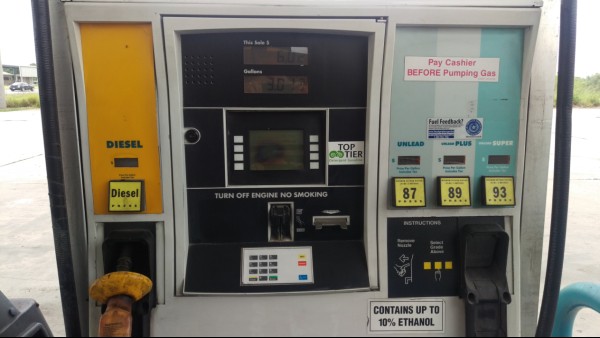Winter and your Underground Storage Tanks: Few Minutes Now or Frustration Later
Mar 3rd 2019
Northern weather conditions cause problems for UST owners/operators. Winter weather can be the cause of unique circumstances for facilities in northern states that facilities in other states do not experience. Proper maintenance now is important so that the winter season does not cause headaches later. Winterize your facility before the winter months arrive.
The best time to prepare for the winter is in the fall. Preventative measures must be taken before the snow, ice, and cold weather conditions arrive. If the appropriate steps are not taken, winter can be a troublesome time.
Water can be one of the most destructive forces. It is important to check sumps and containments for water before the first significant freeze and at least every month throughout the winter. As the temperatures rise and fall throughout the winter, constant vigilance of the sumps is required. Water can make its way into sumps from thawing and freezing throughout the winter. If there is a large amount of water entering your sumps, it is a good idea to contact your licensed installer for tips on how to remove and prevent the entrance of water.
No matter how deep the sump, it seems that the cold northern winters will cause the water to eventually freeze. The expansion of ice is hard on sumps and piping. If water freezes in sumps and the interstice of piping, it can cause the material to split and crack. Sumps and the related entry/exit boots can split and deteriorate. The same ice that caused the damage may also hide the damage and allow it to go unseen.
Spill containments should also be checked regularly. It is even more important to check them in the fall. More often than not, the containments can be exposed to surface water. Spilled fuel does not freeze in these sumps, but water will. If ice builds up in the containments, the capacity of the containment is reduced. Fill pipe caps can become frozen in this ice, drivers have a harder time removing them, and hoses from the transport may not seal as tightly to fill pipe.
Liquid in dispenser and submersible pump containments can cause service companies to charge for extra time to remove ice and snow from the sumps when they perform repairs or annual testing (line leak detector testing, line tightness testing, or calibration of meters).
Once the ice is in the secondary containments, it can be almost impossible to remove during the winter. All liquid can be difficult to remove, but ice creates more problems. A sump pump can be used to remove liquid, but usually heat or a chisel is needed to remove ice. Heating the sumps can cause unusual stress to piping, boots, and be a safety hazard from product fumes. Chisels can puncture piping, boots, fittings, or the containment itself.
Drive lids can also cause problems when it comes to snow removal. Snowplows can catch on the drive plates that sit too high, or have edges that will catch. These lids can be damaged or removed by the snow blade. It is important to stay on top of the maintenance of these lids. It is also a good practice to color code lids and plates to assist with finding them after the plow has hidden them in the snow piles.
Dirt build-up underneath drive lids is also problematic. The dirt plugs the backfill around the sump and does not allow water to drain away. The sump lids can freeze in this dirt or cause water to sit on the sump lid. This will prevent easy access to the sump. Removal of the dirt around the top of the sump may allow the surface water to drain away in the backfill that is usually more porous.
Preventative maintenance before the winter arrives is very important to the life of a UST system. Taking a few minutes when the weather is nice can save you frustrations when the weather turns cold. Time and money can be saved by preventative maintenance before the long cold winter sets in.

